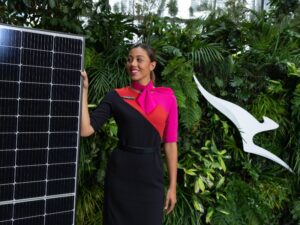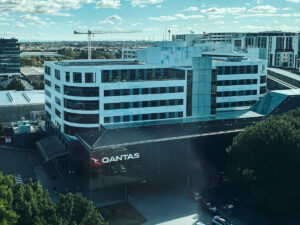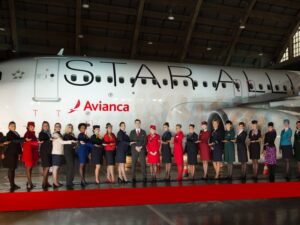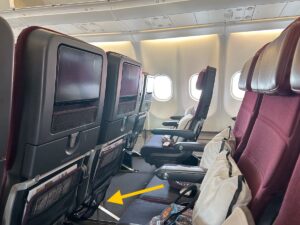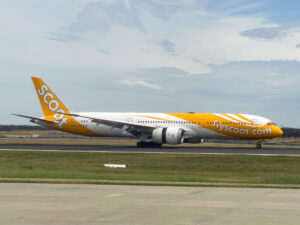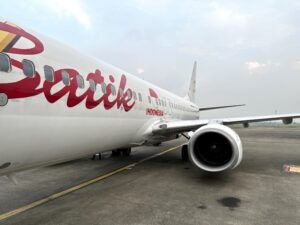
When searching for domestic flights in Argentina, I came across an airline called “Flybondi”. Although the name immediately made me think of Sydney’s famous Bondi Beach, that’s just a coincidence. This isn’t a new Aussie competitor to Bonza, but an Argentinian budget airline.
I wanted to fly to Patagonia. On the date I was looking for, there were flights available with both Flybondi or Aerolíneas Argentinas. Flybondi was less than half the price of the country’s national carrier, so I decided to give them a go. But I couldn’t find many reviews of Flybondi online and wasn’t really sure what to expect.
I’ve since taken this trip. For the benefit of other travellers considering booking a Flybondi flight, I thought I’d summarise my experience in this Flybondi review.
Contents
Flight Details
| Flight number | FO5550 |
| Route | Buenos Aires (EZE) to El Calafate (FTE) |
| Aircraft type | Boeing 737-800 |
| Class of travel | Economy |
| Seat number | 16B |
| On-time performance | We arrived half an hour late |
| Star rating |
The route

Flight Cost
I paid approximately AUD140 for a one-way ticket from Buenos Aires to El Calafate. This price only included 6kg of carry-on luggage, so I paid an additional AUD30 to check-in a 20kg suitcase.
During the booking process, you can also choose to add extra carry-on baggage allowance, priority boarding, airport check-in or a pet for an additional fee. Club Flybondi members can get a small discount.
I initially had trouble booking this flight on the Flybondi website – and not just because the website is only available in Spanish.
I often find that South American airline websites don’t accept Australian credit cards, but that wasn’t the problem here. After a few Google searches, I realised that the issue was probably the two letters in my Australian passport number. I tried entering only the numbers and the booking went through successfully.
Airport Experience
As Flybondi charges extra to check in at the airport, I had already checked in online and had a digital boarding pass. But I still had to queue up at the airport to drop off my checked luggage. Although the line moved quickly, Flybondi only had three check-in counters open so this took over half an hour.
Note that Flybondi closes check-in for domestic flights 45 minutes before departure. So if you need to drop off a bag, plan to get to the airport a bit early.
This flight departed from Ezeiza International Airport (EZE), the larger of the two international airports in Buenos Aires which is located further away from the city than Aeroparque (AEP). It’s a fairly nice airport in general. But the waiting area after security for domestic departures was small and crowded, with just a few shops and long lines for the toilets. In hindsight, I should have eaten breakfast before heading through security.
Boarding started around 40 minutes before the scheduled departure time via a bus gate.

Boarding was completed 15 minutes ahead of the scheduled departure time. We then waited another 30 minutes while the pilots sorted out some paperwork. The captain made an announcement apologising for the delay in Spanish, which a flight attendant translated into English shortly after. (All of the cabin crew spoke Spanish and English.)
The Hard Product
Flybondi uses Boeing 737-800s. This particular plane was 13 years old and had been flying for Garuda Indonesia until just a few months ago.
The cabin was in a standard 3-3 layout with 189 Economy Class seats. Although the cabin felt a bit dated, the seats were comfortable with good padding and adjustable headrests.

My travel companion and I didn’t choose seats in advance and were randomly assigned these at check-in. It turns out that we’d won the airline lottery and had been given exit row seats with lots of legroom!

The standard legroom in other rows appeared to be the same as you’d get on most other airlines, with around 30 inches of seat pitch.
In the exit rows, for some reason, the tray tables had been removed from the backs of the seats in front. Instead, we had tray tables that folded out from the armrests.
There was no Wi-Fi on board or any in-flight entertainment.
This may have been exacerbated by the fact I was sitting near an exit door, but it felt very cold in the cabin. I generally prefer cooler aircraft cabins, but needed to put on a jacket during the flight.
The Soft Product
Flybondi reminded me a bit of Ryanair – maybe it was the distinctive yellow and blue uniforms – but all of the staff were really friendly.
This was an almost full flight. Nobody weighed or checked our carry-on, but there was enough room for everyone’s bags in the overhead lockers, which had advertising on them.
During their announcement welcoming passengers on board, the cabin crew asked anyone flying for the first time to raise their hands. Several people did, and everyone clapped for them. (This was the first of several rounds of applause during the flight and after landing.)
This basically underpins Flybondi’s business model. Their slogan is “la libertad de volar” – meaning “the freedom of flying” – and their mission is to democratise air travel in Argentina with low fares and friendly but no-frills service. That’s exactly what they provided.
Given their low-cost business model, I was a bit surprised though by the lack of ancillaries available for sale on board. Many budget airlines make a lot of money selling ancillaries like food, drinks, merchandise, blankets, headphones or even lottery tickets on board. Yet, on Flybondi, ancillaries almost felt like an afterthought.
The cabin crew did come through the aisle with a trolley offering snacks and drinks for sale. But there were no printed menus advertising what was available and the range was disappointingly limited. (I did wonder if Argentina’s high inflation rate could be behind the lack of menus – the airline unfortunately might have to update the prices too frequently to be worth the printing costs.)
There were only a few packaged snacks available to eat – chips, Doritos and chocolate – plus a basic selection of non-alcoholic drinks. I ordered a coffee, which consisted of hot water in a plain Styrofoam cup, a coffee bag and powdered milk in a sachet. The cost was 1,500 Argentinian pesos, or around AUD2.50.
Towards the end of the flight, a passenger was unwell and the cabin crew sprung into action. They immediately called for a doctor (there were around ten on board), retrieved the first-aid kit and were clearly well-trained to assist.
Our flight had to hold for a little while before continuing the approach to El Calafate because the sick passenger was lying on the floor. Eventually she was able to return to her seat and we landed.

After landing, the crew requested that everyone remained seated so they could disembark the passenger requiring medical assistance first. All of the passengers were very understanding and complied with this request.

One more thing…
Of course, the true test of any airline is the frequency of – and how well they handle – disruptions such as delays and cancellations.
My flight wasn’t badly delayed. Having said that, compared to other airlines in Argentina, Flybondi does seem to have more delays, cancellations and diversions. It has a relatively small fleet of around a dozen Boeing 737-800s, with an average age of 15 years old, and the airline works its fleet hard. This can also make it more difficult for the airline to recover from delays.
I asked a local travel agent in El Calafate whether he thought Flybondi is a good airline. He told me that he personally considers Flybondi to be a safe airline with experienced pilots, but that he usually flies JetSMART because they have a more modern fleet and are more reliable.
He added that he would generally prefer to fly with Aerolíneas Argentinas if the prices were similar. But he thought JetSMART offered the best value for money of the Argentinian airlines.
For what it’s worth, I flew back with SkyTeam’s Aerolíneas Argentinas. That flight ran a bit late, but the standard legroom was noticeably better and the crew served complimentary snacks and non-alcoholic drinks.
Flybondi Boeing 737-800 Economy Class
-
Airport Experience
-
Hard Product
-
Soft Product
Final thoughts
My flight with Flybondi was cheap and cheerful. I had fairly low expectations, but the service was good on the ground and in the air.
If you just want to get from A to B at the lowest price, Flybondi seems like a perfectly fine airline. However, given their high number of delays, you perhaps shouldn’t rely on Flybondi if you need to get to your destination at a specific time.
You can leave a comment about this Flybondi review on the Australian Frequent Flyer forum.

